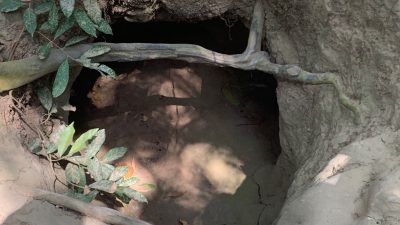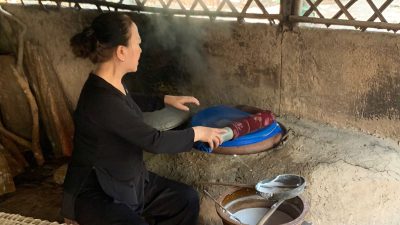Cu Chi Tunnels
The underground city that changed warfare
The Cu Chi Tunnels represent one of the most remarkable underground networks in military history. Located 70 kilometres northwest of Ho Chi Minh City, this extensive tunnel system played a crucial role during the Vietnam War.
The Viet Cong began constructing these tunnels during their resistance against French colonial forces in the 1940s, but the network expanded significantly during the Vietnam War.
The construction and design features
The underground network stretches across more than 250 kilometres, featuring multiple levels that reach depths of up to 10 metres. The Viet Cong designed the Cu Chi Tunnels with remarkable ingenuity, incorporating air vents disguised as termite mounds and underwater entrances along the Saigon River.
The Cu Chi Tunnels housed an entire underground community. The network included kitchens, meeting rooms, hospitals, and storage facilities. Clever engineering allowed smoke from cooking fires to dissipate gradually through vents located far from the actual kitchens, preventing detection by opposition forces.
Life in the underground network
Daily existence in the Cu Chi Tunnels demanded extraordinary resilience. The underground network served as both a military base and living quarters for thousands of Viet Cong soldiers. Despite challenging conditions, including flooding, limited air supply, and the constant presence of snakes and scorpions, the tunnel inhabitants developed sophisticated systems for daily survival.
During the Vietnam War the Cu Chi Tunnels functioned as a highly effective military base. The Viet Cong utilised guerrilla warfare tactics, launching surprise attacks before quickly disappearing back into the underground network. This combat strategy proved extremely successful in South Vietnam, allowing the Viet Cong to control a vast area despite facing superior firepower.
Strategic advantage
The extensive tunnel system provided the Viet Cong with a significant tactical advantage during the Vietnam War. The underground network included sophisticated ammunition depots strategically positioned throughout different levels, allowing for efficient resupply during combat operations.
Conference rooms carved deep within the earth served as secure locations for military planning, while intricate escape routes incorporated multiple fake paths and dead ends to confuse enemy forces.
The network’s design enabled rapid troop movement, and storage facilities positioned near key exit points contained weapons and supplies, enabling the Viet Cong to launch coordinated attacks with minimal warning. The Viet Cong developed an innovative early warning system throughout the Cu Chi Tunnels, using bamboo tubes to transmit sound and alert forces of approaching enemy units.
The tunnels today
The Cu Chi Tunnels now serve as a war memorial and historical site. Sections of the underground network have been preserved and widened to accommodate interested parties. The site offers insights into the incredible engineering feat and human determination that created this remarkable structure.
They are a reminder of an extraordinary example of military engineering and human adaptability during the Vietnam War.
This underground network, spanning hundreds of kilometres, served as both a military base and living space for thousands of Viet Cong soldiers. Today, the tunnels remain a significant historical site, offering profound insights into one of history’s most complex conflicts.
On a personal level
Coming here, more than anywhere else in Vietnam was a very moving, emotional experience for me. During the Vietnam (American) War, we had conscription in Australia. This meant that men had to register for the National Service Scheme on their 20th birthday and would then be subject to a ballot, drawn twice a year. If their birthdate was drawn, they were subject to up to 5 years of army service. However, in December 1972 the need to register was ceased, two months before my 20th birthday. Potentially, I literally dodged a bullet.
- Emerging after crawling 60m through a section of tunnel
- A section of collapsed tunnel
- Me in one of the tunnel entrances
- Demonstrating one of the above ground kitchens
- Me and one of the original captures tanks








Leave A Comment